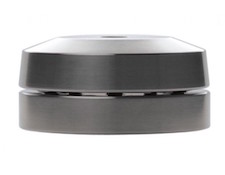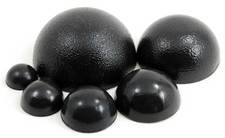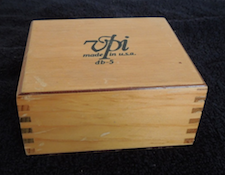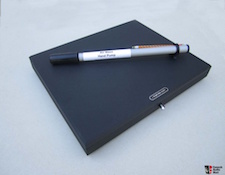It’s the time of year for saving money!
During the time I’ve been involved with audio I’ve watched concerns with resonances and vibrations affecting sound quality go from non-issues to something that some audiophiles consider nearly as important as a system’s overall frequency response and dynamic range. And in response to audiophile’s concerns we have seen an explosion of vibration and resonance-control products available to help solve resonance and vibration issues. And as you would expect, for every person who swears by a particular product’s abilities to solve all their sonic concerns, there’s another who will show you “with science” that there are no resonance or vibration issues that need fixing. My own position is somewhere in the middle.
 I have at various times used vibration or resonance reduction devices in my systems over the years. And what I’ve found, if I have to resort to generalities (which often have little place in high-performance audio discussions) when I’ve had an actual resonance or isolation issue some devices did solve those problems. In other words, isolation and resonance devices are solutions that need a problem in order to work properly. If you don’t have a problem, you don’t need a solution.
I have at various times used vibration or resonance reduction devices in my systems over the years. And what I’ve found, if I have to resort to generalities (which often have little place in high-performance audio discussions) when I’ve had an actual resonance or isolation issue some devices did solve those problems. In other words, isolation and resonance devices are solutions that need a problem in order to work properly. If you don’t have a problem, you don’t need a solution.
And when have I found isolation devices most effective? For me high-gain analog devices have always shown the most benefit from more isolation, such as a turntable that employs a moving coil low-output cartridge. At its worst case, poor isolation can cause turntable feedback howls, but for most systems vibration leakage is subtler, but just as pernicious.
 Tube electronics, especially if they contain high-gain circuitry, are also primary potential candidates for resonance and vibration reduction because tubes, no matter how premium they may be, often have microphonic properties that amplify external sound and noise along with the primary audio signal. By isolating and damping a chassis or enclosure you reduce the noise that will reach the tubes inside and therefore reduce what affects them.
Tube electronics, especially if they contain high-gain circuitry, are also primary potential candidates for resonance and vibration reduction because tubes, no matter how premium they may be, often have microphonic properties that amplify external sound and noise along with the primary audio signal. By isolating and damping a chassis or enclosure you reduce the noise that will reach the tubes inside and therefore reduce what affects them.
And how do you tell if you need to investigate additional isolation for a component? I use my finger. No, I do not advocate giving anyone THE FINGER, but if you don’t occasionally rest your hand or fingers on a component while music is playing you’ll never know if you have a vibration issue. My methodology is simple – if I rest my finger lightly on a component and I feel vibrations when music is playing, some isolation may be in order.
I’ve seen much derision aimed at VPI’s “Magic Brick,” which was (and is) a wooden box with layers of steel plate inside. Its weight makes it an ideal chassis dampener. It is also great for keeping small, light preamplifiers from sliding around.
 So far I haven’t mentioned any particular vibration or resonance-reduction products (besides the brick) I use regularly because nowadays I don’t use many. I have air-filled platforms under both my turntables and my equipment is on equipment stands with some isolation built into their design, but I don’t any additional devices because my finger (and my ears) haven’t detected any components that are trying to sing along with my music in my new room – a lot of that is because I’m using full-range open baffle controlled-directivity horn loudspeakers which do no pressurize the room in the same manner as conventional dynamic-driver box loudspeakers.
So far I haven’t mentioned any particular vibration or resonance-reduction products (besides the brick) I use regularly because nowadays I don’t use many. I have air-filled platforms under both my turntables and my equipment is on equipment stands with some isolation built into their design, but I don’t any additional devices because my finger (and my ears) haven’t detected any components that are trying to sing along with my music in my new room – a lot of that is because I’m using full-range open baffle controlled-directivity horn loudspeakers which do no pressurize the room in the same manner as conventional dynamic-driver box loudspeakers.
One final tip before I go – if you think you have a resonance or isolation issue the easiest way to see if you really have a problem (and the least expensive way to solve that problem) is to move the suspected component farther away from your loudspeakers and see how the sound changes. According to the inverse square law, if you move a component twice the distance away from your speakers the noise level generated by the speakers will be half as loud in the new location. And while moving a component can be a pain in the keester, it could also be the best way to solve your own isolation/resonance/vibration problems without spending any money (except for a longer cable from your source component or preamp to the rest of your system.)
 Next time you listen to your system, let your fingers do a little walking and see if you need to do anything about vibrations and resonances affecting source components in your listening room. It’ll be fun, I promise…
Next time you listen to your system, let your fingers do a little walking and see if you need to do anything about vibrations and resonances affecting source components in your listening room. It’ll be fun, I promise…





